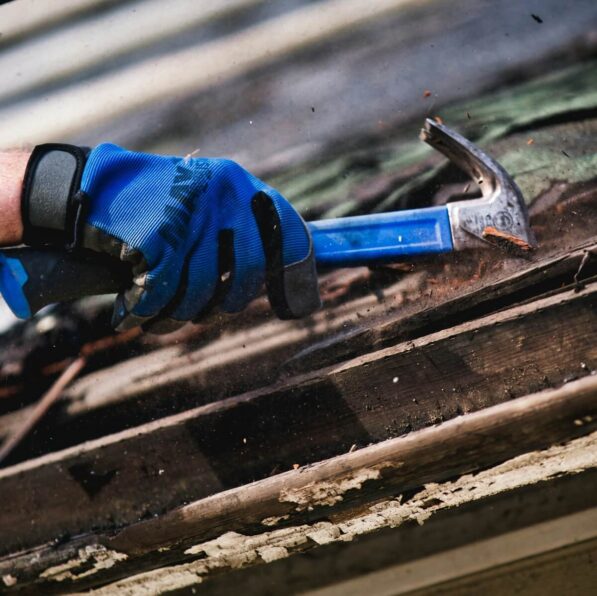Professional roof replacement is inevitable for every home, whether due to age, storm damage, or other issues. If you suspect your home is nearing the need for a new roof, it’s essential to choose the right materials and contractor to ensure long-term durability and value. This mini guide will help you navigate the process, providing expert insights on selecting the best roofing solutions for your home. Investing in professional roof replacement guarantees a high-quality installation, improved energy efficiency, and enhanced curb appeal. Make the right choice to protect your home for years to come!
The Lifespan of a Roof Replacement
The lifespan of a roof replacement is a crucial consideration if you are seeking a long-lasting roofing solution. Various factors contribute to the overall longevity of your new roof, starting with the choice of roofing materials. High-quality materials, such as asphalt shingles, metal, or clay tiles will significantly impact the roof’s durability. While the lifespan of your roof replacement depends on material, installation, and maintenance, most roofs range from 20 to 50 years.
Asphalt shingles, one of the most common roofing materials, typically last around 20 to 30 years, whereas metal roofing endures for 40 to 50 years or more. Factors such as climate, exposure to harsh weather conditions, and the frequency of maintenance also influence the actual lifespan. You can maximize the longevity of your roof replacement by selecting durable materials, ensuring proper installation, and adhering to regular inspections and timely repairs.
Signs It May Be Time to Replace Your Roof
Recognizing the signs that indicate the need for a roof replacement is paramount for homeowners aiming to protect their investment and ensure the safety of their property. From visible wear and tear to age-related issues, these indicators offer valuable insights into the overall condition of a roof. To help you decide, here are the most common signs that suggest it may be time to call a roofing contractor:
- Age of the Roof
- Visible Wear and Tear
- Leakage and Water Damage
- Sagging or Drooping Roofline
- Granule Loss on Shingles
- Moss or Algae Growth
- High Energy Bills
- Curling or Buckling Shingles
- Daylight Through the Roof Boards
- Frequent Repairs
The Importance of a Timely Replacement
A deteriorating roof can lead to a host of issues, including leaks, water damage, and compromised insulation. By promptly addressing signs of wear and tear, you can prevent more extensive damage, enhance energy efficiency, and maintain the overall value of your property. Proactive roof replacement averts costly repairs and ensures a secure and durable shelter for the long term, contributing to the well-being of the entire home.
Choosing a Contractor
Selecting the right roof replacement contractor is a crucial step in your roofing project. Begin by researching and compiling a list of reputable contractors with a proven track record in your area. Look for certifications, licenses, and insurance to verify their legitimacy and commitment to quality workmanship. Obtain multiple quotes to compare pricing and ensure transparency in the contractor’s estimates.
Additionally, seek referrals from previous clients and read reviews to gauge customer satisfaction. Ultimately, choosing a contractor with a solid reputation, relevant experience, and a commitment to professionalism will contribute to a seamless and successful roof replacement.
The Process of Roof Replacement
Roof replacement is a significant undertaking that demands careful planning and execution. Here are the key stages involved in roof replacement, guiding you through the steps involved in restoring your roofing system:
- Inspection and Assessment – Begin the roof replacement process with a thorough inspection and assessment of the existing roof. Identify any signs of damage, determine the extent of repairs needed, and evaluate the overall condition of the roofing structure.
- Material Selection – Once the assessment is complete, choose the appropriate roofing materials based on factors such as durability, climate suitability, and aesthetic preferences. Consider options like asphalt shingles, metal roofing, or clay tiles, ensuring they align with both functional and aesthetic requirements.
- Removal of Existing Roofing Materials – Clear the way for the new roof by removing the existing materials, including shingles, underlayment, and flashing. This stage allows for a clean slate and enables a closer inspection of the roof deck to address any underlying issues.
- Structural Repairs – Address any structural issues discovered during the removal process, including damaged decking or compromised support structures. Ensuring a solid foundation is essential for the longevity and stability of the new roof.
- Installation of Underlayment – Lay down a high-quality underlayment to provide an additional layer of protection against moisture. This step is crucial for preventing water infiltration and maintaining the structural integrity of the roof over time.
- Roofing Material Installation – Install the selected roofing materials meticulously, following manufacturer guidelines and industry best practices. Whether it’s shingles, tiles, or metal panels, precise installation ensures optimal performance and durability.
- Flashing and Ventilation Installation – Properly install flashing around roof penetrations and in vulnerable areas to prevent water seepage. Additionally, ensure adequate ventilation to regulate temperature and humidity, promoting the longevity of both the roof and the entire home.
- Clean-Up and Debris Removal – After the installation is complete, thoroughly clean the work area and remove any debris generated during the roof replacement process. This ensures a safe and tidy environment while putting the finishing touches on the project.
- Final Inspection and Maintenance Guidance – Complete the roof replacement process with a final inspection, verifying that all components are in place and functioning correctly. Provide homeowners with guidance on routine maintenance practices to maximize the lifespan of the new roof and uphold its performance over the years.
Considerations for Homeowners
Several critical considerations come into play when you are choosing between roof repair or replacement. Factors such as age, visible signs of deterioration, and the frequency of repairs are major influential factors. Additionally, homeowners must weigh the cost of replacement against potential long-term benefits.
Choosing the right roofing materials suited to the climate and architectural style of the home is another crucial consideration, as is selecting a reputable and experienced contractor for the job. Ultimately, making an informed decision that prioritizes durability, energy efficiency, and overall value is paramount.
Investing in professional roof replacement can add many years to your home, increase its resale value, and reduce energy costs related to heating and cooling the home. If your house is telling you it’s time for a new roof, putting off your roof renovation will only become more costly the longer you wait.
Peak Roofing & Exteriors
If you’re looking for an honest and experienced roofing contractor that can handle your home or business roofing needs in Northwest Arkansas, Northern Louisiana, or West Texas, look no further. Peak Roofing & Exteriors will deliver with quality and integrity. Contact us today and book your FREE inspection!

